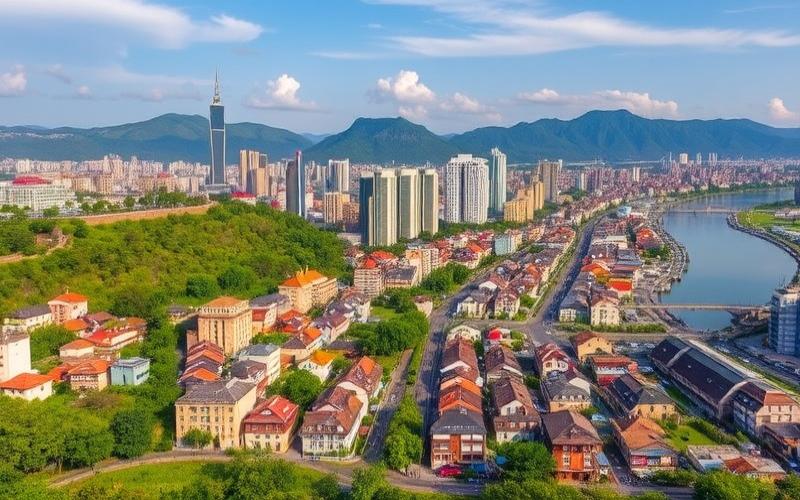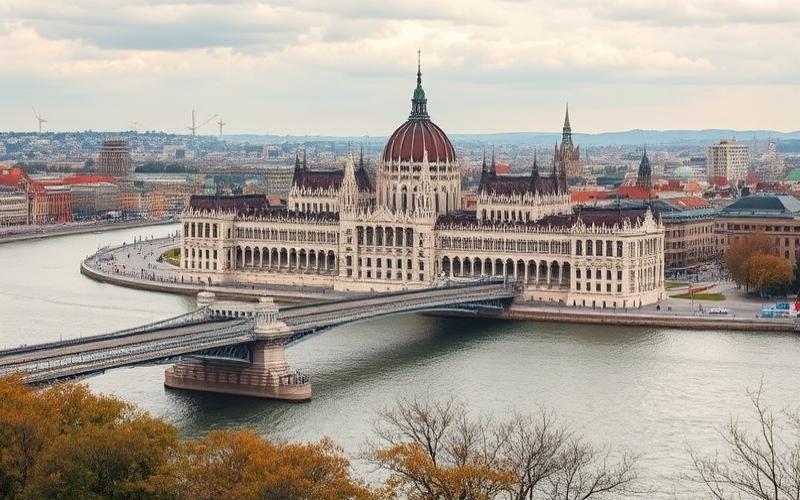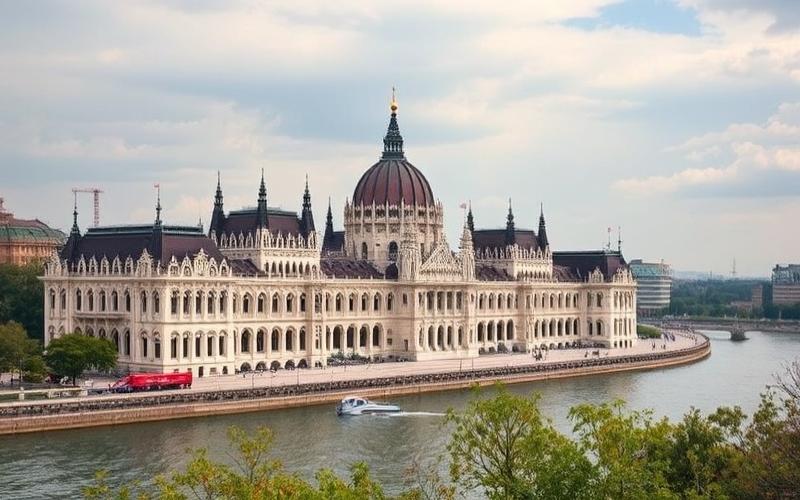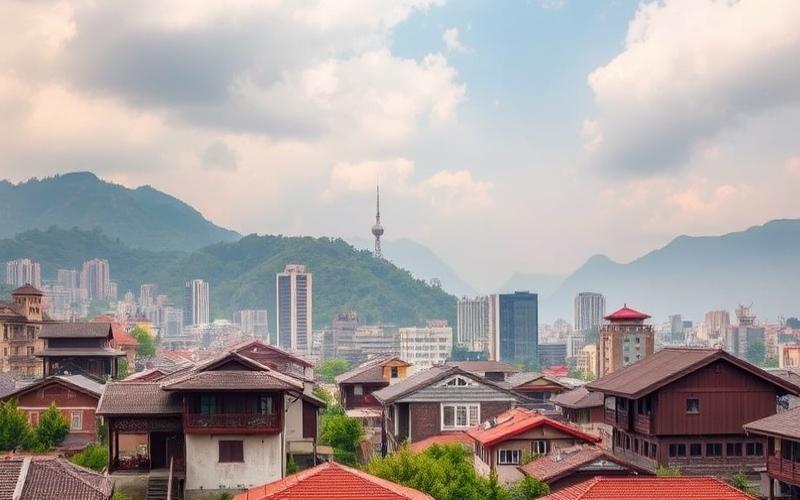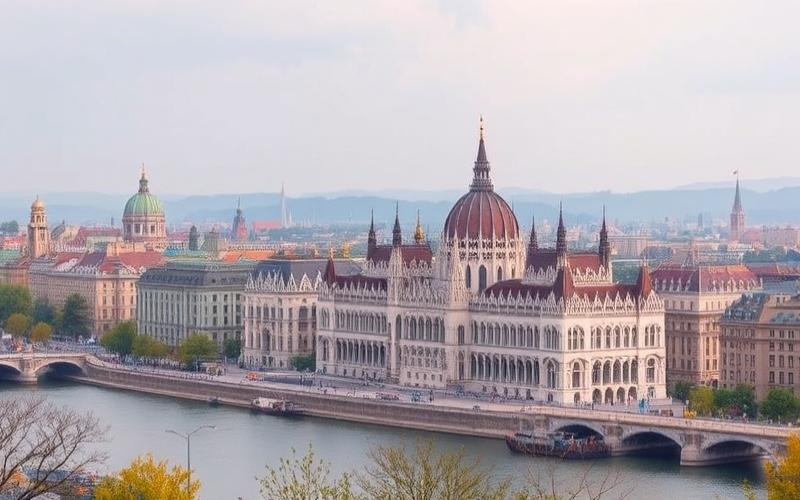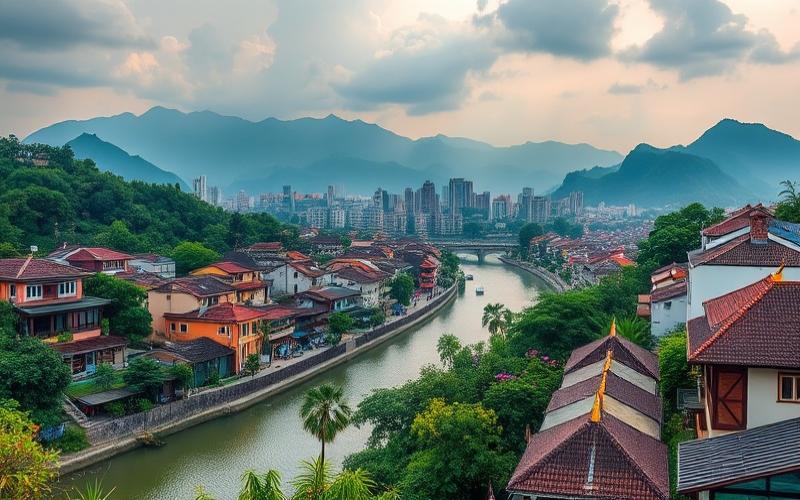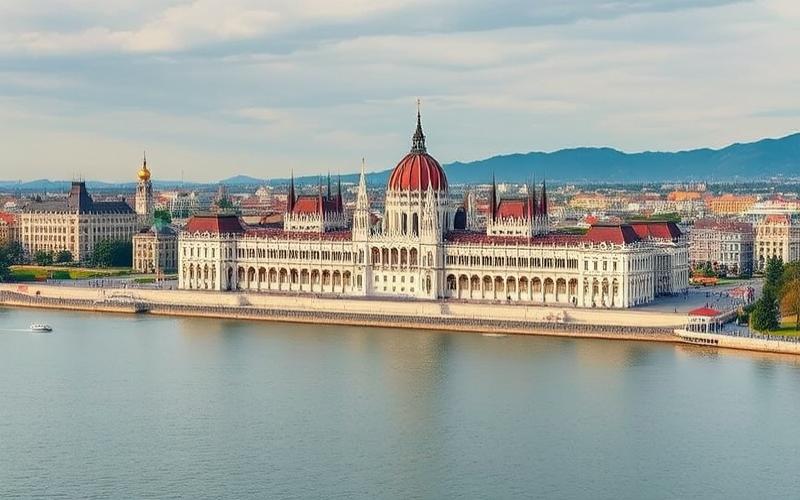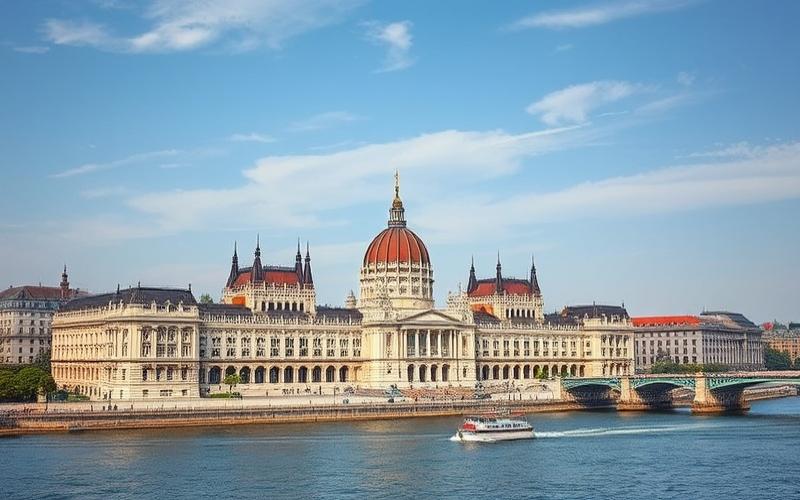
 Published on and written by Cyril Jarnias
Published on and written by Cyril Jarnias
Hungary, located in the heart of Central Europe, stands out for its rapidly expanding industrial potential, attracting investors from all sectors. This dynamism is beautifully enhanced by its strategically located free zones, true engines of economic growth.
Offering significant tax benefits and ideal logistical proximity, these special economic zones become preferred destinations for companies looking to expand in the region.
Discovering these exceptional investment opportunities not only allows you to benefit from top-tier infrastructure but also to participate in Hungary’s vibrant economic modernization.
Overview of Hungary’s Industrial Real Estate Market
Hungary’s industrial real estate market is experiencing rapid growth, driven by increasing demand for logistics warehouses and spaces suitable for urban distribution.
Recent trends include:
- Strong increase in demand for logistics warehouses, primarily linked to the rise of e-commerce, new consumption habits, and the need to optimize last-mile logistics.
- Proliferation of “dark stores”: these spaces dedicated exclusively to preparing and shipping online orders are rapidly developing in major cities, especially Budapest. They often utilize vacant or underutilized commercial premises.
- Adaptation of the urban real estate market with a preference for:
- Compact warehouses on the outskirts (5,000 to 15,000 m²)
- Small intra-city distribution centers (500 to 5,000 m²)
- Micro-hubs (<500 m²) integrated into residential areas
Key Strategic Geographic Areas
| Area | Key Advantages |
|---|---|
| Győr (Northwest) | Proximity to Austria/Slovakia; major automotive cluster (Audi) |
| Székesfehérvár (Center) | Technology hub; efficient railway infrastructure |
| Debrecen (East) | Attractive land costs; new BMW plant (2025); 13% |
| Budapest/Pest Metropolitan Area | Capital proximity; skilled workforce; European highway networks |
Main Competitive Advantages:
- Dense highway network, direct connection with neighboring European countries.
- Increased availability of industrial land, particularly around intermodal hubs.
- National economic incentives: favorable taxation, targeted subsidies for innovative industrial/logistics projects.
Influence of Free Zones:
Industrial free zones play a driving role:
They promote the establishment of international players, thanks to:
- Partial or total tax exemptions,
- Simplified administrative procedures,
- Priority access to public infrastructure (roads, energy, etc.).
This attracts foreign direct investment and stimulates the dedicated real estate supply.
Future Outlook:
Summary list of expected dynamics:
- Continued digitalization/smart logistics via automation & robotics
- Continuous increase in modular/prefabricated share in new industrial construction
- Growing land pressure near major axes & international intermodal hubs
- Increased integration of environmental/energy efficiency criteria in new projects
The Hungarian sector is expected to continue its growth under the combined influence of: Central European regional dynamics; post-pandemic industrial relocations; national political will to attract foreign capital through targeted incentives.
Good to Know:
Hungary’s industrial real estate market is experiencing notable growth, with strong demand for logistics warehouses due to the increase in e-commerce and requirements for faster distribution. In 2022, investments in this sector recorded a 15% increase, mainly thanks to growing interest from multinational companies. The areas around Budapest, with their easy access to transport infrastructure such as the highway network and logistics hubs, are proving particularly attractive to investors. Free zones, offering tax incentives and tariff reductions, play a crucial role in attracting new businesses, consequently amplifying the demand for industrial spaces. Among the main market players are CPI Property Group and CTP, which continue to expand their portfolio in the country. Furthermore, the availability of affordable land and supportive government policies contribute to the stabilization and future growth of the industrial sector in Hungary, which remains influenced by global economic trends such as sustainable development and the digitalization of logistics processes.
Tax Benefits of Free Zones for Investors
Tax Benefits for Investors in Hungary’s Free Zones
Hungary offers a very attractive tax regime for investors, particularly in the industrial real estate sector, although the official term “free zone” is not always used. Incentives take the form of tax exemptions and reductions, as well as targeted state or local benefits.
Main Tax Benefits:
- One of the lowest corporate tax rates in Europe: 9%
- Possibility to benefit from a reduced rate of 5% under specific conditions (strategic investments, priority sectors)
- Tax exemptions for investments made in regions or zones considered priorities
- Reductions or exemptions on local property tax and business activity tax depending on location and type of industrial project
- Additional tax deductions related to:
- Creation of local jobs
- Hiring unemployed individuals or recent graduates
- Staff training expenses
- Sustainable development and energy transition of industrial buildings
Comparative Table of Main Tax Benefits
| Country | Standard CIT Rate | CIT Exemption | Capital Gains Tax Reduction | Other Real Estate Incentives |
|---|---|---|---|---|
| Hungary | 9% | Yes | Yes (depending on project) | Exemption from local taxes, job/training subsidies |
| Poland | 19% | Partial | No | Regional subsidies |
| Slovakia | 21% | No | No | Regional relief |
| Costa Rica | ~30%* | Yes | Yes | VAT/customs duty exemption |
List of Specific State/Local Incentives for Industrial Real Estate in Hungary:
- Direct subsidies for job-creating projects (>50 positions often required)
- Support for vocational training of newly hired staff
- Shortened depreciation periods for new or renovated industrial buildings
- Administrative simplification regarding building permits and urban planning procedures
International Comparison:
Hungary stands out for its low nominal rate (9%), significantly lower than major European competitor countries. Unlike Costa Rica where exemptions are temporary but total for several years, Hungary favors stable but low taxation with additional bonuses linked to location and sector. Other countries like Poland mainly offer partial or geographically limited exemptions.
Case Studies / Concrete Examples:
- Audi Hungaria
Installation in Győr: benefit from reduced corporate tax rate + local subsidies + tax relief linked to massive job creation. - Samsung SDI
Industrial zone near Budapest: rapid permit acquisition thanks to simplified procedures reserved for major investors; priority access to regional aid. - Hungarian logistics SME that developed an industrial park near Debrecen: significant reduction in total cost thanks to local deductions combined with national aid for regional development.
These examples illustrate how to combine different schemes to optimize overall tax burden while also benefiting from the logistical dynamism offered by these specialized territories.
Summary Checklist:
To invest effectively in Hungarian industrial real estate
- Identify if your project falls under a priority zone/eligible region.
- Evaluate cumulative opportunities between reduced national taxes and local deductions.
- Mobilize employment/training aids from the project design phase.
Good to Know:
In Hungary, free zones offer significant tax benefits for industrial real estate investors, including exemptions from profit taxes for several years, as well as reductions in real estate capital gains taxes. Companies also benefit from specific incentives, such as subsidies for job creation or infrastructure improvement. Compared to other countries, Hungarian free zones stand out for their competitiveness and accessibility to European markets. For example, Audi benefited from significant tax exemptions in the Győr free zone, thereby strengthening its strategic position in Europe. This structure of tax benefits and incentives is particularly attractive to investors seeking to minimize operational costs while accessing a pivotal logistics hub in the EU.
Hungary’s tax competitiveness is based primarily on its low universal nominal rate (9%) coupled with a flexible range of local incentives that allow for maximum legal optimization – often superior to that offered elsewhere in Central Europe!
The Rise of Logistics Warehouses in Hungary
Hungary, thanks to its central geographical location within Europe, plays a strategic role in logistics flows between the continent’s East and West. This privileged position allows it to act as a major hub for goods transit, notably with direct access to major European highway and railway axes as well as its international airport.
- Geographical attractiveness: The Greater Budapest region concentrates 3.2 million m² out of the national 4.7 million m² of industrial space (Q1 2023), benefiting from immediate proximity to major infrastructure and facilitating rapid delivery to neighboring markets.
- Concrete example: The East-West Gate (EWG) terminal, located at the Ukrainian border, optimizes rail-road intermodal transshipment between two different railway gauges; it can handle up to one million containers per year.
Hungarian free zones strongly contribute to this attractiveness:
- They offer tax benefits such as:
- Partial or total VAT exemption on certain flows
- Reductions on corporate tax for logistics investments
- Simplified customs procedures accelerating goods transit
- These schemes particularly encourage foreign investors seeking to optimize their supply chains while reducing operational costs.
The industrial real estate market is experiencing an evolution marked by increased demand for modern warehouses:
- In 2025, over 600,000 m² are under construction in the country. In the Greater Budapest region alone, nearly 446,000 m² will be delivered this year.
- Several major projects illustrate this dynamism:
- CTPark Szigetszentmiklós: development of an additional 120,000 m².
- Panattoni City Dock Törökbálint: recent delivery of four buildings totaling 17,000 m².
- Sino-European logistics center (Budapest): Chinese investment exceeding $30M to create a multifunctional logistics center over 100,000 m².
Summary Table – Key Indicators
| Year | Total Industrial Area (m²) | New Projects Underway (m²) | Number of Companies |
| Q1 2023 | 4,700,000 | >600,000 | ~484 |
| Forecast End ’25 | — | ~446,000 (Budapest) | — |
Technological integration is radically transforming the sector:
- Advanced automation with robotic systems for dynamic inventory management and rapid conveying.
- Growing digitalization via IoT platforms and cloud solutions optimizing real-time traceability.
- Increasing focus on environmental sustainability: design of eco-responsible warehouses using green energy and recycled materials.
List – Adopted Technological Innovations
- Automated systems like narrow aisles & robotic storage
- Integrated digital supply chain management platforms
- Smart sensors improving order & inventory management
Outlook remains very favorable. Expected annual growth oscillates around +5% to +6% until 2030. Evolution will be driven by:
- Continuous development of e-commerce requiring high-performance “last-mile” infrastructure
- Strengthening of intermodal hubs connected to international networks
- Sustained foreign investment supported by the incentive regulatory framework of free zones
Hungary thus establishes itself as an essential platform for international players seeking logistical performance, customs flexibility, and technological innovations at the very heart of the European market.
Good to Know:
Hungary’s strategic geographical location, at the heart of Central Europe, offers a major advantage for the development of logistics warehouses, reinforced by the availability of free zones attracting foreign investors thanks to tax and regulatory benefits. The Hungarian industrial real estate market has experienced notable growth with increasing demand for modern logistics infrastructure, driven by the explosion of e-commerce and supply chain optimization. The occupancy rate of warehouses in free zones is around 95%, testifying to their attractiveness, and recent projects, such as the expansion of facilities by Amazon and DHL, illustrate the success of these investments. With the growing integration of IoT technologies and automation, Hungarian warehouses are positioning themselves for the future, meeting the demands of modern logistics and ensuring increased efficiency.
Yield and Outlook for Industrial Real Estate in the Country
Current Yield and European Comparison
Yields for industrial real estate in Hungary are generally around 6.5% to 7.25%, significantly above the average of major European cities, where yields oscillate between 4% and 5%.
This outperformance is explained by growing demand in the logistics sector, driven by the country’s strategic geographical position and dynamic expansion of industrial activities.
| Market | Yield Rate (%) |
|---|---|
| Hungary | 6.5 – 7.25 |
| Europe (average) | 4.0 – 5.0 |
Medium and Long-Term Financial Projections
In the medium term (3–5 years), the Hungarian market is expected to maintain high yields thanks to:
- Continuous growth of the logistics sector.
- Sustained increase in real estate prices (+9 to +12% in recent years).
- Expected stabilization of interest rates which will facilitate access to financing.
In the long term (>8 years), prospects remain favorable subject to:
- Controlled management of inflationary risk.
- Stable public policies supporting foreign investment.
Opportunities in Free Zones
Budapest: Main hub for logistics development with strong demand for modern warehouses and infrastructure connected to major European axes.
Győr: Industrial zone focused on automotive and technology, benefiting from local tax incentives to attract foreign investors.
Debrecen: Emerging center thanks to major industrial projects (automotive plants) offering strong land valuation potential.
Identified free zones:
| City | Main Assets |
|---|---|
| Budapest | International logistics hub |
| Győr | Automotive industry & innovation |
| Debrecen | New industrial investments |
Government Policies & Tax Incentives
List of measures favoring industrial investment:
- Partial or total corporate tax exemptions in certain free zones
- Direct subsidies for creation or renovation of infrastructure
- Facilitated access to financing via public/private partnerships
These schemes enhance the attractiveness of the Hungarian market while stimulating regional development.
Main Sector Challenges
- Possible fluctuation of interest rates potentially impacting real estate credit costs
- Regional geopolitical uncertainties likely to affect economic stability
- Persistent inflation complicating long-term financial forecasting
- Limited supply of new industrial buildings facing growing demand
Structural Issues
The observed dynamism relies as much on a favorable macroeconomic context as on an active tax attraction policy; however, it remains conditional on the Hungarian real estate sector’s ability to respond quickly to technological evolutions and adapt to international financial uncertainties.
Good to Know:
The current yield of industrial real estate in Hungary is around 6 to 7%, slightly above the European average, highlighting its growing attractiveness. Medium-term projections foresee a continuous increase in demand, particularly in free zones around Budapest, Győr, and Debrecen, thanks to the boom in the logistics sector and infrastructure expansion. The Hungarian government actively supports this dynamic through attractive tax incentives and proactive policies favoring foreign investment. However, investors must remain vigilant against potential challenges, such as interest rate volatility and regional geopolitical uncertainties that could influence market stability. These elements, combined with the strength of the local labor market and competitive operational costs, align Hungary as a strategic destination for industrial real estate in Central Europe.
Disclaimer: The information provided on this website is for informational purposes only and does not constitute financial, legal, or professional advice. We encourage you to consult qualified experts before making any investment, real estate, or expatriation decisions. Although we strive to maintain up-to-date and accurate information, we do not guarantee the completeness, accuracy, or timeliness of the proposed content. As investment and expatriation involve risks, we disclaim any liability for potential losses or damages arising from the use of this site. Your use of this site confirms your acceptance of these terms and your understanding of the associated risks.









